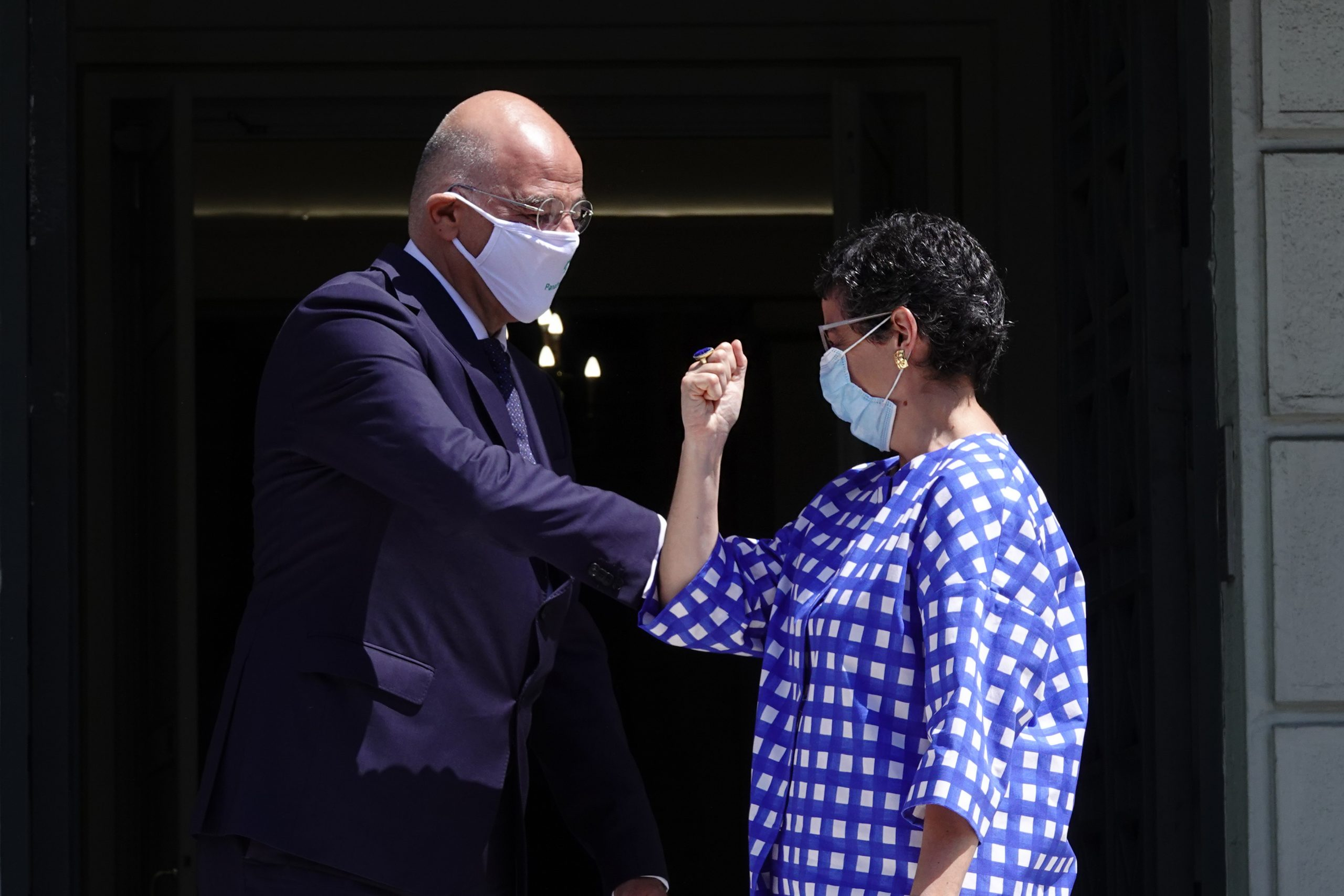When a handshake wasn’t just a polite greeting – how the ancient Greeks used it as a symbol of distrust or mourning
We often associate a handshake with trust. It’s a common gesture when meeting someone, sealing a deal, or showing mutual respect. But in antiquity, the handshake wasn’t always a friendly gesture—it sometimes carried deeper, more somber meanings.
A Gesture Born of Caution
Handshake between Hera and Athena, late 5th century BCE, Acropolis Museum, Athens.
Photo source: Wikipedia
In ancient Greece, particularly from the 5th century BCE onward, evidence from ceramic art and historical texts shows that the handshake was already in use—but not necessarily as a warm greeting. In many cases, it was a signal of suspicion.
The act of extending the right hand showed that one was unarmed, a way of proving peaceful intentions. In ancient Rome, this gesture went further: people would clasp each other’s arms up to the elbow to make sure no weapon was hidden in a sleeve. Similarly, during the Middle Ages, knights used sudden handshakes to test if their opponent carried concealed weapons.
Homer, Tombstones, and Trust
One of the earliest known depictions of a handshake is an ancient Assyrian relief from the 9th century BCE. It shows the Assyrian king Shalmaneser III shaking hands with the Babylonian king Marduk-zakir-shumi I to seal an alliance.
Photo source: Wikipedia
Homer often referenced the handshake in his epics, portraying it as a symbol of trust. The gesture frequently appeared in ancient art—on frescoes, vases, statues, and especially funerary reliefs.
On these funerary steles, the deceased is often depicted seated, bidding farewell to loved ones with an outstretched hand. One powerful example is the handshake between Hera and Athena, displayed at the Acropolis Museum in Athens. Dating from the late 5th century BCE, it immortalizes a farewell that transcends time.
"Dexiosis": The Final Goodbye
One of the most moving depictions in ancient Greek funerary art is the dexiosis—the handshake between the deceased and the living. This visual motif became dominant in Attic grave reliefs after 430 BCE.
The dexiosis symbolized a final farewell between the departed and their loved ones—or perhaps even a reunion in the afterlife. It was a moment frozen in marble, capturing the sorrow of separation and the hope of reconnection.
The word “dexios,” meaning “right,” may derive from dechomai (to receive) or deomai (to ask). The right hand was the hand of welcome, of offering, and of honor. As Aristophanes wrote, “δεξιοῦσθαι θεοῖς” —raising one’s right hand in tribute to the gods.
Ancient Alliances and Ceremonial Handshakes
One of the oldest known depictions of a handshake comes from a 9th-century BCE Assyrian relief. It shows King Shalmaneser III clasping hands with Babylonian King Marduk-zakir-shumi I to seal an alliance. This early diplomatic gesture underlines the handshake’s long-standing role as a symbol of agreement and mutual commitment.
The Evolution of the Modern Handshake
Funerary stele of Thraseas and Euandria. Marble, circa 375–350 BCE, Pergamon Museum.
Photo source: Wikipedia
By the 17th century, the Quakers in England had adopted the handshake as a sign of equality and honesty. By 1800, it had become so common in society that etiquette guides were being published to teach people the proper way to shake hands.
Today, the handshake is more than a cultural tradition—it’s a neurological experience. Studies show it triggers the release of oxytocin in the brain, a hormone linked to feelings of trust and social bonding.
Some researchers even suggest that after shaking hands, people subconsciously bring their hand to their nose to pick up chemical cues from the other person—an evolutionary remnant of our animal instincts.
East vs. West: A Matter of Grip
In Western societies, a firm handshake is seen as a sign of confidence and determination. In contrast, many Eastern cultures prefer a softer grip, as a way of avoiding dominance and showing respect.
The Handshake in Pandemic Times
During the COVID-19 pandemic, the world was forced to rethink this centuries-old gesture. Health authorities around the globe advised against handshakes to reduce the spread of the virus.
In place of the traditional handshake, people adopted alternatives like elbow bumps, fist bumps, foot taps, and even the contactless “Namaste” gesture. At one point, the “footshake” was proposed as a quirky yet safe substitute.
A memorable image from the pandemic shows Greek Foreign Minister Nikos Dendias greeting his Spanish counterpart Arancha González Laya with an elbow bump—an iconic sign of the times.
A Symbol of Human Connection
The greeting between Greece's Foreign Minister Nikos Dendias and Spain's Foreign Minister Arancha Gonzalez Laya during the COVID-19 pandemic.
Photo source: wikimediamtx commons
Despite its many transformations across history—from signs of suspicion and mourning to expressions of trust and diplomacy—the handshake remains, at its core, a deeply human act.
As Christine Lagarde, professor of psychology at the University of Texas at Austin, put it:
“The handshake is a literal gesture of human connection and a symbol of how people evolved to be deeply social beings.”













